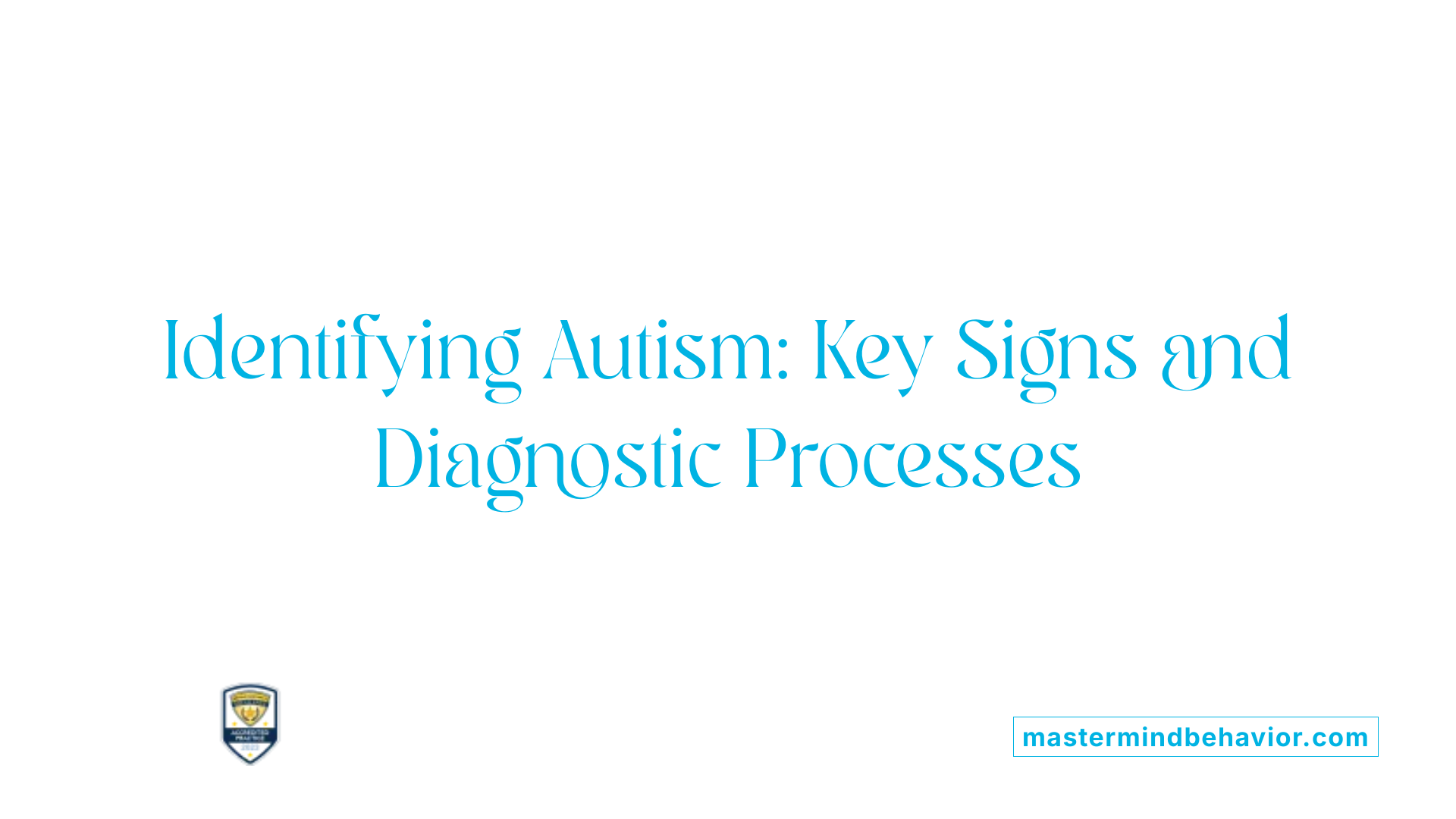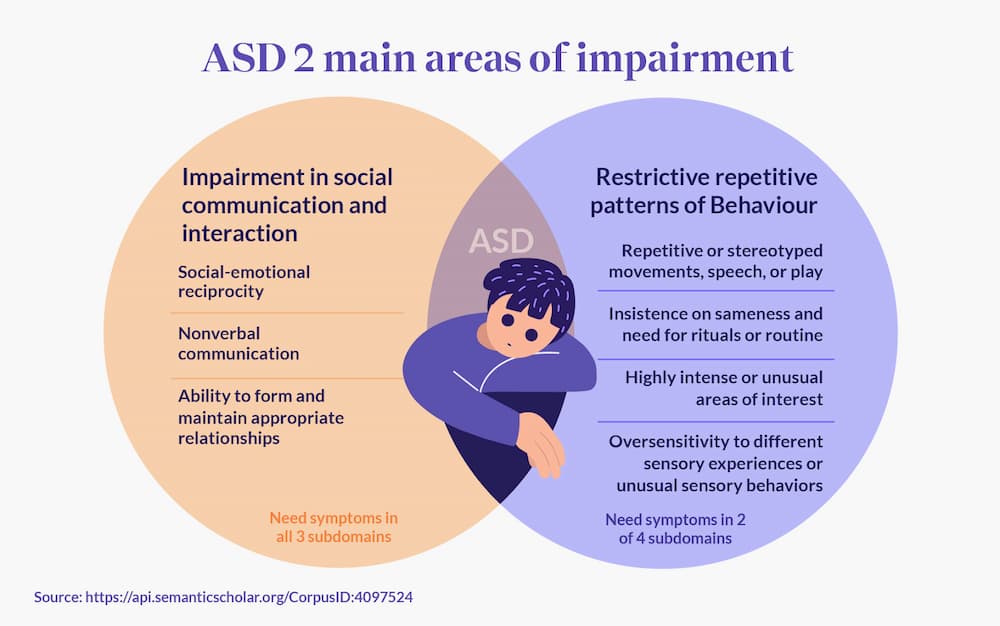Simple steps Autism Behavioral Therapy techniques ease transitions
Simple steps Autism Behavioral Therapy techniques ease transitions
Blog Article
Understanding the Influence of Behavioral Autism on Life and Social Interactions
You could not understand how deeply behavioral autism influences life and social interactions. People on the range typically browse a world loaded with interaction hurdles and sensory overload. These difficulties can cause frustration and isolation, affecting their connections and overall health. Recognizing these nuances is important for promoting encouraging settings. What strategies can we carry out to create more meaningful links and comprehensive spaces? The solutions could stun you.
Specifying Behavior Autism and Its Attributes
Behavior autism, commonly referred to as autism spectrum disorder (ASD), includes a variety of problems defined by challenges in social interaction, interaction, and repetitive behaviors. You may observe that people with ASD often struggle to analyze social signs, which can result in misconceptions in conversations. They might find it hard to develop eye call or participate in little talk, making social scenarios really feel overwhelming.
Communication troubles can materialize in numerous methods, from postponed speech advancement to a choice for utilizing less words. Repetitive actions, such as hand-flapping or shaking, can act as coping devices to manage stress or sensory overload. These attributes can exceptionally affect everyday life, making it necessary for you to understand and support those with ASD. By identifying these characteristics, you can foster a setting that promotes acceptance and motivates effective communication, assisting people with autism grow in their everyday communications.
The Spectrum of Autism: Comprehending Variability in Actions
Autism range disorder (ASD) isn't a one-size-fits-all diagnosis; it varies extensively among individuals. You may observe that some individuals with ASD display moderate signs, while others may deal with extra substantial challenges. This variability can manifest in actions, interests, and sensory sensitivities. You may encounter people that are highly verbal and engage easily in conversations, while others could prefer solitary tasks or connect non-verbally.
Additionally, the method people with ASD reply to sensory input can vary considerably; some may be bewildered by intense lights or loud sounds, whereas others thrive in stimulating atmospheres. The range also consists of differences in social communications; some people might struggle to analyze social cues, while others navigate social settings with loved one convenience. Comprehending this irregularity is essential, as it aids you value everyone's distinct experience and tailor assistance to their particular demands, promoting an extra inclusive setting for every person.
Interaction Challenges Faced by Individuals With Autism
When you connect with individuals on the autism range, you might discover their special interaction difficulties. They often face problems with both nonverbal and verbal cues, which can influence their social communications. Recognizing these barriers is essential for promoting far better links and support.

Verbal Communication Problems
Several individuals on the autism spectrum experience spoken communication troubles that can considerably affect their daily interactions. Your rate, quantity, or tone could not straighten with social expectations, creating others to misinterpret your intentions. Acknowledging these challenges can assist you and your support network develop strategies to boost communication and cultivate better links with others in your day-to-day life.
Nonverbal Communication Obstacles
Spoken interaction isn't the only challenge individuals on the autism spectrum face; nonverbal interaction barriers can be simply as substantial. You might locate it difficult to interpret body movement, face expressions, and eye call, which are vital for effective communication. These difficulties can cause misconceptions or misconceptions of social signs, making interactions really feel frustrating or complicated. You might struggle to express your very own feelings via nonverbal ways, leaving others unclear of your intents or feelings. This separate can create feelings of seclusion and aggravation. Recognizing these obstacles is essential for fostering understanding and empathy in your interactions. By resolving nonverbal interaction, you can find approaches to enhance your social experiences and boost your overall top quality of life.
Social Communication Effects
Social communications can frequently feel frustrating due to the distinct interaction obstacles dealt with by people with autism. Recognizing these difficulties can help you locate techniques to improve interaction, such as exercising social abilities in safe setups or utilizing aesthetic aids. Understanding your needs allows you to navigate social communications with greater confidence and convenience.
Social Communication and Relationship Structure in Autism
While structure relationships can be testing for people with autism, understanding their one-of-a-kind perspectives and communication styles can foster meaningful links. You could discover that many people on the spectrum choose straight communication and might have problem with social signs or tiny talk. By being straightforward in your interactions, you can assist create an environment where they really feel comfortable.
Take the time to observe and pay attention how they reveal themselves. This understanding can lead you in guiding read the article discussions extra properly. Taking part in shared passions can also work as a bridge to much deeper connections. Whether it's a leisure activity, a favored program, or a common passion, these typical strings can open up doors to relationship.
Life Regimen: Browsing Challenges and Techniques
Maneuvering everyday life regimens can be specifically challenging for individuals with autism, particularly when unforeseen adjustments happen. To browse these difficulties, take into consideration implementing visual timetables or checklists.
Developing a routine that consists of sensory breaks can additionally be helpful. This helps develop an understanding atmosphere.
Lastly, technique mindfulness methods to handle anxiety and anxiety. Basic breathing workouts or grounding strategies can make a considerable difference. By incorporating these strategies, you can enhance your daily routine and reduce interruptions, making life really feel a lot more manageable.
Strengths and Capacities of Individuals on the Autism Range
Recognizing everyday life routines is just one element of the autism experience. Several people on the autism spectrum possess amazing toughness and capabilities that establish them apart.
Furthermore, your memory skills typically radiate, particularly in areas of rate of interest. Aba Therapist. This flair for maintaining information can make you a useful resource in fields like technology, art, or scientific research. You may additionally exhibit strong aesthetic thinking, enabling you to picture complex concepts and address issues artistically
In addition, your distinct perspective on the world can promote empathy and understanding in more helpful hints others, enhancing social interactions. Accepting these toughness not only improves your self-confidence yet likewise helps others value the diverse abilities you give the table.
Creating Inclusive Environments for Individuals With Autism
Producing comprehensive settings for people with autism begins with making sensory-friendly spaces that deal with their special needs. You can also cultivate chances for social interaction, aiding to construct relationships and links. By making these changes, you'll add to a more inviting ambience for every person.
Creating Sensory-Friendly Spaces
While designing sensory-friendly spaces, it's vital to mirror on the one-of-a-kind needs of people with autism. Start by picking calming shades and soft illumination to create a calming environment. When bewildered, integrate silent areas where individuals can charge and retreat. You'll intend to reduce loud sounds and interruptions, using soundproof products or white noise devices to assist maintain harmony. Consider responsive elements like soft fabrics or fidget-friendly items that can provide convenience. Identify that areas are versatile, permitting easy rearrangement to fit various activities. Lastly, consist of visual schedules or clear signs to aid people browse the space confidently. By useful source attentively integrating these aspects, you can create an inviting environment that sustains sensory demands and advertises overall wellness.
Advertising Social Communication Opportunities
Creating sensory-friendly spaces not only addresses individual comfort yet additionally sets the stage for purposeful social interactions among individuals with autism. Encourage peer mentoring, pairing people with autism with helpful peers that can assist them via social situations. By applying these approaches, you can improve social chances, assisting individuals with autism develop friendships and enhance their social skills in a secure, inviting setting.

Regularly Asked Concerns
How Can Friends Assistance A Person With Behavioral Autism?
You can support a friend with behavioral autism by holding your horses, paying attention proactively, and respecting their boundaries. Involve in tasks they delight in, interact freely, and develop a comfy atmosphere where they really feel valued and understood.
What Resources Are Readily Available for Moms And Dads of Children With Autism?
You can discover numerous sources for parents of children with autism, consisting of support system, instructional websites, and regional social work. Getting in touch with other moms and dads can additionally provide beneficial insights and shared experiences to assist browse obstacles.
Can Behavioral Autism Modification With Time?

Yes, behavioral autism can transform with time. You could discover changes in communication, social skills, and habits as your youngster grows. Early intervention and assistance often play essential roles in these developing adjustments.
Just How Do Sensory Sensitivities Influence Life?
Sensory level of sensitivities can make daily experiences frustrating. You might struggle with intense lights or loud noises, leading to stress or evasion. Finding settings that fit your needs can greatly boost your convenience and general life.
What Prevail Misconceptions About Behavioral Autism?
You could believe behavior autism just affects communication abilities, however it's even more complicated. Many assume individuals lack compassion or intelligence, which isn't true. Recognizing these misconceptions helps foster acceptance and assistance for those on the spectrum.
Behavior autism, typically referred to as autism spectrum condition (ASD), includes an array of conditions identified by challenges in social communication, interaction, and repeated habits.Social communications can typically feel frustrating due to the one-of-a-kind interaction obstacles faced by people with autism.Creating sensory-friendly areas not just addresses individual comfort however additionally sets the stage for purposeful social communications amongst people with autism. Encourage peer mentoring, pairing individuals with autism with supportive peers that can guide them via social situations. By applying these techniques, you can enhance social opportunities, assisting people with autism develop friendships and enhance their social skills in a safe, welcoming atmosphere.
Report this page